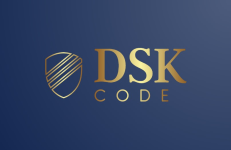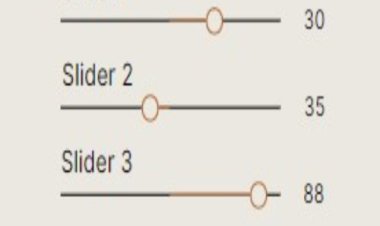25 MongoDB Interview Questions and Answers (2023)
An overview of questions commonly asked in an interview for a position involving MongoDB, the popular open-source database system. Topics include database structure, scalability, performance, and security.

What is MongoDB?
MongoDB is a popular NoSQL database management system that stores data in a flexible, JSON-like format called BSON. It is known for its high performance, scalability, and flexibility, making it ideal for handling large-scale, unstructured data.
What are the key features of MongoDB?
MongoDB has several key features, including:
- Document-based storage: MongoDB stores data in flexible, JSON-like documents.
- Scalability: MongoDB is horizontally scalable, allowing it to handle large amounts of data and high traffic loads.
- High availability: MongoDB supports replica sets and automatic failover for ensuring high availability and data durability.
- Flexible data modeling: MongoDB allows for dynamic schema changes, making it easy to store and query data with varying structures.
- Rich query language: MongoDB supports a powerful query language with features such as aggregation, indexing, and full-text search.
What is BSON?
BSON stands for Binary JSON, and it is a binary-encoded serialization format used by MongoDB to store data in a compact, efficient binary format. BSON is similar to JSON in terms of data types and structure, but it provides additional data types such as binary data, date, and ObjectId.
What is a replica set in MongoDB?
A replica set in MongoDB is a group of MongoDB servers that work together to provide high availability and data redundancy. It consists of a primary node that handles all write operations and one or more secondary nodes that replicate data from the primary node. If the primary node fails, one of the secondary nodes is automatically elected as the new primary, ensuring continuous availability of data.
Explain the concept of sharding in MongoDB.
Sharding is the process of distributing data across multiple MongoDB servers or shards to achieve horizontal scalability. Each shard contains a subset of the data, and the data is distributed based on a shard key. Sharding allows MongoDB to handle large amounts of data and high traffic loads by distributing the data across multiple servers.
What is the difference between a document and a collection in MongoDB?
In MongoDB, a document is a single record that represents data in a BSON format. It is similar to a row in a traditional relational database. A collection, on the other hand, is a group of related documents stored in MongoDB. It is similar to a table in a relational database.
How does MongoDB handle transactions?
Starting from MongoDB version 4.0, MongoDB supports multi-document transactions, allowing users to perform multiple operations on multiple documents in a transactional manner. MongoDB uses the two-phase commit (2PC) protocol to ensure the consistency and durability of data during transactions.
What is an index in MongoDB?
An index in MongoDB is a data structure that allows for efficient and fast retrieval of data based on the values of one or more fields in a collection. Indexes are used to speed up query performance by reducing the amount of data that needs to be scanned and filtered during query execution.
What are the different types of indexes in MongoDB?
MongoDB supports several types of indexes, including:
- Single-field index: Indexes that are created on a single field.
- Compound index: Indexes that are created on multiple fields.
- Multi-key index: Indexes that are created on arrays to index the values of array elements.
- Text index: Indexes that are used for text search operations.
- GeoSpatial index: Indexes that are used for geospatial queries on data with coordinates.
How can you create an index in MongoDB?
In MongoDB, you can create an index using the createIndex() method or the ensureIndex() method. For example, to create a single-field index on a field called "name" in a collection called "users", you can use the following syntax:
This will create an ascending index on the "name" field in the "users" collection. The number "1" specifies the ascending order, while "-1" specifies descending order.
What is GridFS in MongoDB?
GridFS is a specification for storing large files, such as images, audio files, and videos, in MongoDB. It uses a combination of two collections: "files" and "chunks". The "files" collection stores metadata about the files, while the "chunks" collection stores the actual binary data of the files in small chunks.
How can you perform aggregation in MongoDB?
Aggregation in MongoDB is the process of processing and transforming data using various operations such as grouping, filtering, sorting, and calculating aggregate functions. MongoDB provides an aggregation framework that allows you to perform aggregation using the aggregate() method. For example, you can use the following syntax to group documents by a field called "category" and calculate the average of the "price" field:
{ $group: { _id: "$category", avgPrice: { $avg: "$price" } } }
])
This will group documents in the "products" collection by the "category" field and calculate the average of the "price" field for each category.
What is the difference between find() and findOne() in MongoDB?
find() and findOne() are two methods used to query data in MongoDB. The main difference is that find() returns a cursor, which is a pointer to the result set, while findOne() returns a single document that matches the query criteria.
What is a covered query in MongoDB?
A covered query in MongoDB is a query where all the fields required by the query are covered by an index. This means that MongoDB can fulfill the query without having to load the actual documents from the collection, resulting in faster query performance.
How can you perform backups and restores in MongoDB?
MongoDB provides several methods for performing backups and restores, including:
- mongodump: A command-line tool that creates a binary dump of the data in a MongoDB database.
- mongorestore: A command-line tool that restores data from a binary dump created by mongodump.
- MongoDB Atlas: A managed MongoDB service that provides automated backups and restores.
- Filesystem snapshots: Backing up the underlying storage system where MongoDB data is stored.
How can you perform data modeling in MongoDB?
Data modeling in MongoDB involves designing the structure of documents and collections to efficiently store and query data. Some best practices for data modeling in MongoDB include denormalizing data, embedding related data in the same document, using appropriate data types, and designing indexes based on query patterns and performance requirements.
What is the TTL index in MongoDB?
The TTL (Time-To-Live) index in MongoDB is a special type of index that allows you to automatically expire documents from a collection after a certain amount of time. This is useful for storing data that has a limited lifespan, such as temporary data or session data. You can create a TTL index by specifying an expiration field and the desired time-to-live in seconds when creating the index.
What is a cursor in MongoDB?
A cursor in MongoDB is a pointer to the result set of a query. When you perform a query using methods like find(), MongoDB returns a cursor that you can use to iterate over the results or fetch a subset of the results. Cursors are used to efficiently retrieve large result sets and minimize memory usage.
What is the role of the "ObjectId" in MongoDB?
The "ObjectId" is a built-in data type in MongoDB that is used as the default primary key for documents in a collection. It is a 12-byte value that consists of a timestamp, a unique machine identifier, a process identifier, and a counter. The "ObjectId" is automatically generated by MongoDB when a document is inserted into a collection and can be used to uniquely identify documents within a collection. It is often used as a unique identifier in the "_id" field of MongoDB documents.
What is horizontal scaling in MongoDB?
Horizontal scaling in MongoDB refers to the ability to distribute data across multiple nodes or servers in a cluster. It allows for increased storage capacity, processing power, and high availability of data. MongoDB achieves horizontal scaling through techniques such as sharding, which partitions data across multiple shards, and replica sets, which maintain multiple copies of data across different nodes.
How can you perform a join in MongoDB?
MongoDB does not support joins like traditional relational databases. Instead, data can be denormalized by embedding related data within the same document or by using application-level joins. This means that data that would typically be stored in separate tables in a relational database can be stored in a single document or across multiple documents in MongoDB. This approach avoids the need for expensive join operations and can result in faster query performance.
What is the "findAndModify" command in MongoDB?
The "findAndModify" command in MongoDB is a powerful command that allows you to atomically modify and return a document in a single operation. It can be used to update a document and retrieve the updated document in a single request. The "findAndModify" command takes a query to specify the document to be modified, an update operation to specify the changes to be made, and optional parameters to specify options such as sorting and returning the original document.
What is the role of the "mongod" process in MongoDB?
The "mongod" process in MongoDB is the primary daemon process that runs the MongoDB server. It is responsible for managing all aspects of the MongoDB server, including handling client connections, processing queries, managing storage, and handling replication and sharding in a distributed environment. The "mongod" process is the core component of the MongoDB server and is responsible for storing and managing the data.
What is the "NoSQL" approach in MongoDB?
MongoDB is a NoSQL database, which means that it does not follow the traditional relational database model. Instead of using tables with fixed schemas, MongoDB uses flexible, JSON-like documents to store data. This allows for dynamic and schema-less data structures, making it easy to store, retrieve, and update data in a flexible and scalable manner. The NoSQL approach in MongoDB provides greater agility, scalability, and performance for handling large and complex datasets.
How can you secure MongoDB?
Securing MongoDB involves implementing various security measures to protect the data and ensure the integrity of the system. Some best practices for securing MongoDB include:
- Enabling authentication to require username and password for accessing MongoDB.
- Configuring authorization to control access to databases and collections.
- Encrypting data in transit using SSL/TLS.
- Restricting network access through firewalls and network settings.
- Regularly applying patches and updates to MongoDB to address security vulnerabilities.
- Enabling auditing to monitor and track database activity.
- Using role-based access control (RBAC) to restrict permissions based on user roles.
- Properly configuring and securing MongoDB deployment in a production environment.
















